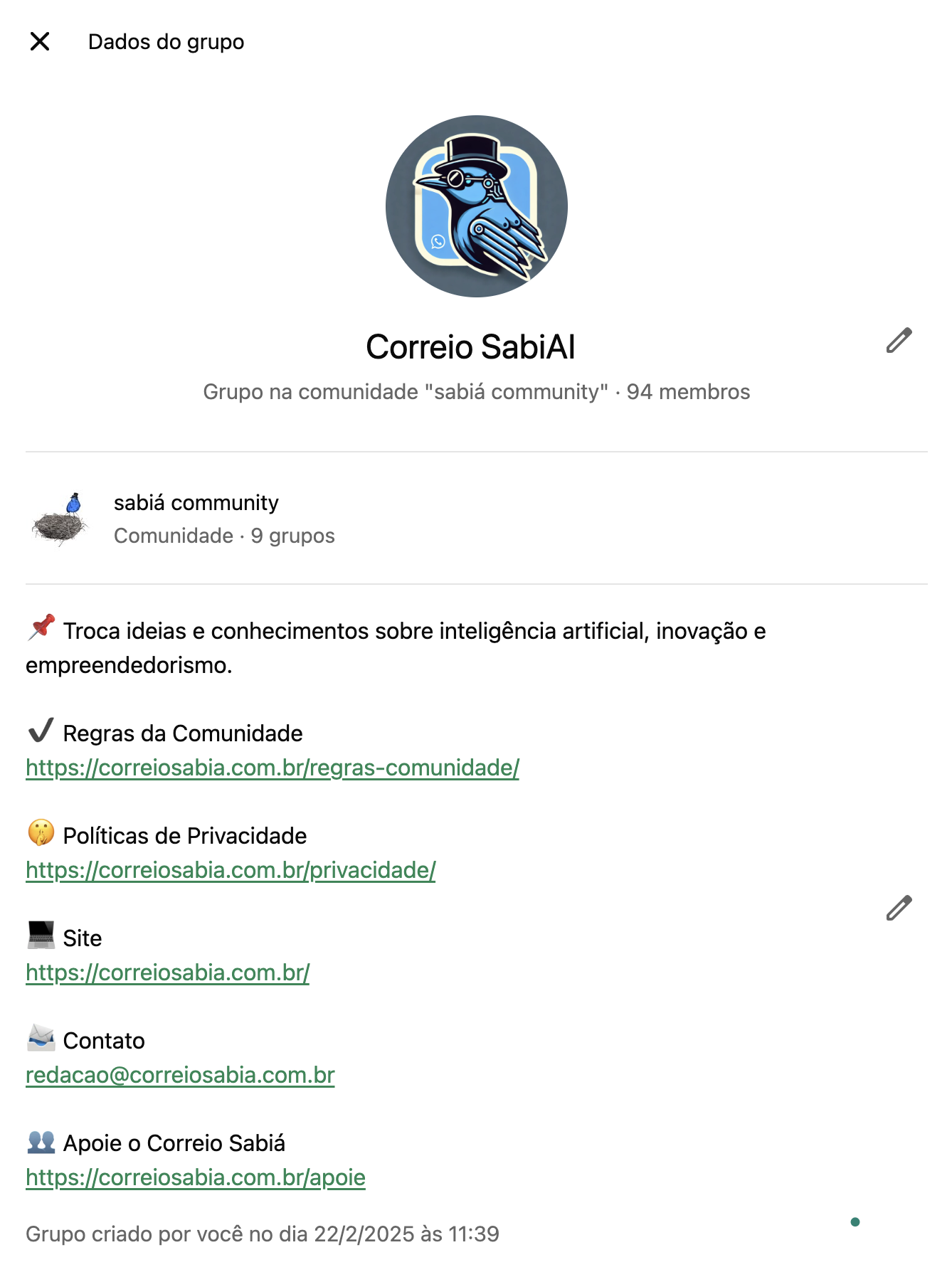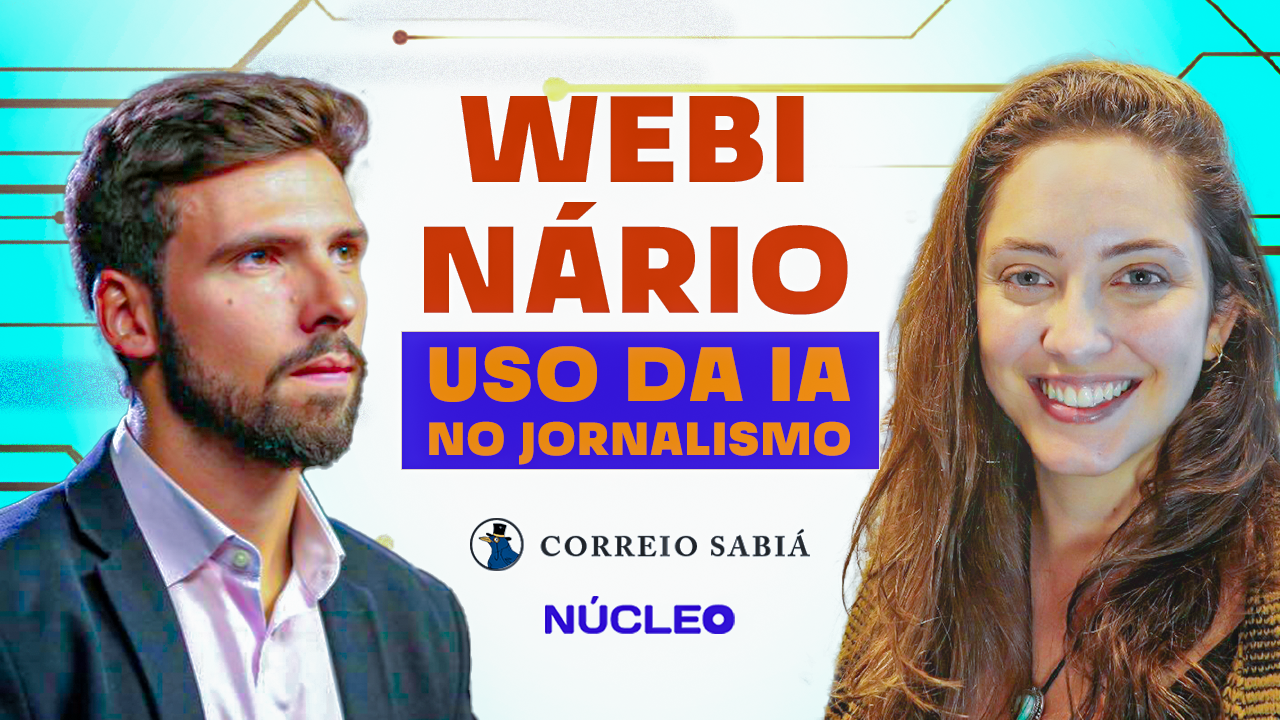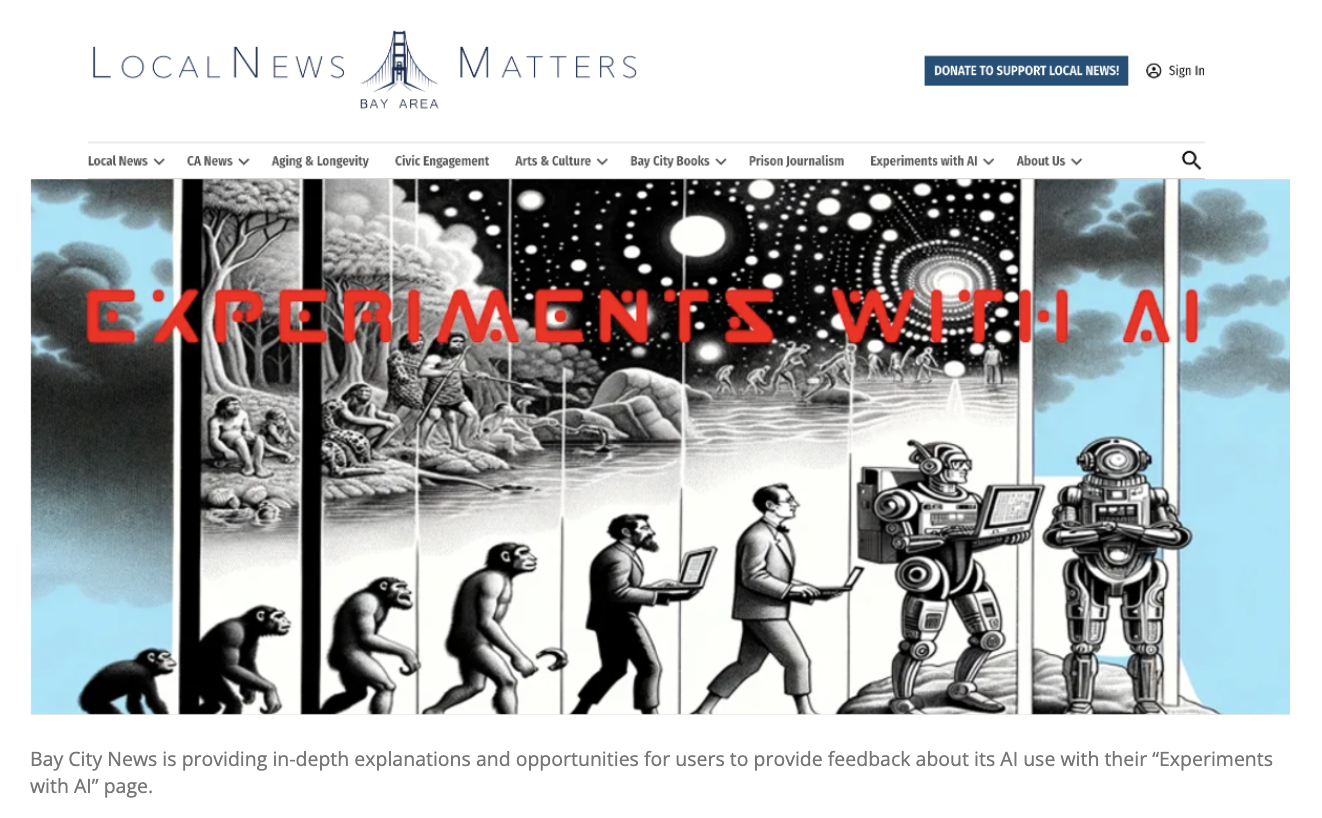
A WhatsApp group and a webinar provided avenues for journalists to help audience members better understand AI.
How Correio Sabiá engaged readers in conversations about AI
Part of public service journalism is identifying your audience’s information needs and finding useful ways to fill them.
Correio Sabiá, a Brazilian news outlet, spent months exploring ways to disclose its use of AI. They noticed that their audience had growing questions about how AI was being used in journalism and saw an opportunity to go beyond simply explaining their approach.
In a Trusting News cohort, more than 80% of survey respondents said it would be helpful if a newsroom provided information and tips to better understand AI in general and detect when AI was used in content creation. The demand for education around AI became even clearer during the one-on-one interviews our partner journalists conducted.
Based on this research and what they were hearing from their own audience, Correio Sabiá launched a dedicated interactive WhatsApp group called Correio SabiAI. The group was launched in February to create a space for readers to ask questions, share concerns and learn alongside journalists as they explore AI’s potential. Within weeks, CEO and Founder Maurício de Azevedo Ferro said almost 100 readers had joined the new WhatsApp group.

Correio SabiAI Group members participated in real-time discussions and helped shape the newsroom’s coverage. The group members also voted on the date and time for a live webinar about AI and helped shape the webinar’s topics. The live webinar was hosted in partnership with another newsroom from the cohort, Núcleo Journalismo. The webinar was promoted through social platforms and the WhatsApp group.
“We highlighted the uses of artificial intelligence in journalism, based on our experience at Correio Sabiá, and also invited colleagues to share their projects and learnings,” Ferro said. “We discussed tools and the ethical implications of AI in journalism, opening the discussion to readers’ questions in the Zoom webinar after presenting use cases.”
APPLY NOW: Want to get paid to educate your community about AI? Find out how and apply by Aug. 29.
Start with the audience and build together
Correio Sabiá’s entire strategy centered on audience engagement. The newsroom created Correio SabiAI within a space where they currently engage with their community: WhatsApp. The newsroom has been using WhatsApp since 2018 for distributing news and combating misinformation.
“Consulting my audience is a daily part of my community engagement work in the Correio Sabiá community’s thematic groups,” Ferro said.
Using a multi-platform strategy — combining WhatsApp, social media and a live event — allowed Correio Sabiá to use audience feedback to offer an opportunity for the community to learn about this new technology along with them. Instead of treating AI as a closed-door newsroom experiment, they are inviting their readers to explore it with them. (Watch the webinar, conducted in Portuguese, on YouTube.)

The results and what’s next
Ferro said he considers the webinar and the WhatsApp group a success because:
- More than 80 people registered for the webinar.
- They have almost 100 active WhatsApp members in “Correio SabiAI.”
- They received emails, WhatsApp messages and Instagram DMs requesting the webinar recording.
- They saw spontaneous shares and praise across Instagram and other platforms.
“I believe the biggest takeaway was the enormous relevance of the topic,” Ferro said. “Now I want to organize more events like this to continue educating my readers about AI.”
Ferro said the newsroom is working on holding another webinar using the same process. This time the focus will be on oceans, with scientists participating as speakers. Ferro said they also plan to livestream the webinar on social media.
The newsroom also will continue to educate the public about AI. Their plan is to use newsletters to share ongoing AI education.
“I’ve emphasized at every opportunity that if we want to address effective solutions to the news ecosystem’s main problems (such as misinformation, news avoidance, and lack of trust), we need to work on audience engagement, content distribution, and education/literacy, Ferro said. “This applies to AI, electoral, environmental issues, etc.”
A Q&A with Maurício de Azevedo Ferro, the journalist behind the work
Read the Q&A with Ferro below to learn more about the process the team used to create this content and what the response from the community and newsroom has been.
Trusting News would like to thank Maurício de Azevedo Ferro and the entire Correio Sabiá team for their time, effort and dedication to building trust with their community through transparency and engagement strategies like these. Through their willingness to experiment, we are able to learn more about what works best to build trust with the public and then share it with the journalism community. If you are experimenting with building trust, let us know here.
How would you describe the effectiveness of the outreach strategy?
This outreach strategy was an important tool for initiating a dialogue with an audience we had not yet reached. We only sent the Zoom webinar registration link to people who commented “AI” on our Instagram post. This initiative allowed us to receive nearly 200 comments, which improved post engagement and also allowed us to open direct messages with each person.
In other words, we expanded our reach in different ways and captured the email addresses of these users, who are now segmented in our database, with their consent at the time of registration, thus respecting data protection and privacy rules.
Finally, the feedback we received was fantastic. There were shares on Instagram Stories and even on LinkedIn, praising the event.
Describe what it was like to produce this content.
The entire process was quite intuitive, as throughout the Trusting News cohort, I shared my learnings and discussions about AI with my audience. When the cohort ended, it was only natural to want to organize a webinar. Consulting my audience is a daily part of my community engagement work in the Correio Sabiá community’s thematic groups. I believe the biggest takeaway was the enormous relevance of the topic, which exceeded my initial expectations. Now I want to organize more events like this to continue educating my readers about AI.
Can you describe how long it took to produce this content? Did you involve other members of your newsroom?
It was an intuitive process, the idea for which had been developing during Trusting News meetings, in an attempt to broaden the promotion of the discussions we held on education and transparency in AI with my existing audience.
The online event involved my idea, feedback from readers of the Correio SabiAI group (within the Correio Sabiá community on WhatsApp), the designer’s work, and an invitation to another news organization, Núcleo Jornalismo, which partnered with us and published the promotional artwork.
The designer played an important role, as he needed to create a simple artwork that communicated all the necessary information about the webinar in a single photo, which was my request.
We initially considered creating a carousel, but jointly decided that we should create a single artwork to facilitate engagement with comments, maximizing viewership. Based on the results, I believe it was the right decision.
Would you use this trust-building strategy or content again?
Without a doubt. It was a wise institutional decision, and we are currently working on holding another webinar in partnership with another newspaper. This time, it will be about oceans, but using the same partnership principle and the same dissemination strategies.
There are some changes to the format, making it even bigger and better. We will have at least three panels and live streaming on social media (YouTube and Instagram). We will invite speakers and moderate the panels. The speakers will be scientists.
This model evolution should be adopted in future AI events, which we want to make regular — and we already have validation from our audience that there is demand for it.
Finally, we intend to intensify contact with our community through newsletters, keeping readers permanently engaged with AI. The goal is to conduct ongoing AI education that strengthens our audience while also helping us improve our journalistic production. Through contact, both parties are strengthened.
How would you rate the difficulty of producing this content?
I don’t think it was “difficult.” The partnership with another news organization, Núcleo Jornalismo, was promptly met. In fact, it was precisely the success of this webinar that prompted another news organization to contact us about partnering with a similar oceans event. It’s another validation.
Our reader base was already segmented by interest in AI, which also helped us in this process. It wasn’t something, let’s say, built from scratch. So, the entire structure was already in place to strengthen our position. And the cost of organizing the online event was low—even lower compared to the engagement it generated.
How would you describe the user response to this content?
Amazing response. Lots of comments; positive, qualitative feedback; and several sharings on multiple social networks.

How would you describe the response from your newsroom after publishing this content?
Not just my newsroom, but others as well. So much so that we received (and accepted) an invitation from another news organization to host another online event.
Our readers also gave very positive feedback, both those who participated and those who couldn’t watch in real time. The feeling is that we should (and can) do more and better.
At Trusting News, we learn how people decide what news to trust and turn that knowledge into actionable strategies for journalists. We train and empower journalists to take responsibility for demonstrating credibility and actively earning trust through transparency and engagement. Learn more about our work, vision and team. Subscribe to our Trust Tips newsletter. Follow us on Twitter, BlueSky and LinkedIn.

Assistant director Lynn Walsh (she/her) is an Emmy award-winning journalist who has worked in investigative journalism at the national level and locally in California, Ohio, Texas and Florida. She is the former Ethics Chair for the Society of Professional Journalists and a past national president for the organization. Based in San Diego, Lynn is also an adjunct professor and freelance journalist. She can be reached at lynn@TrustingNews.org and on Twitter @lwalsh.


